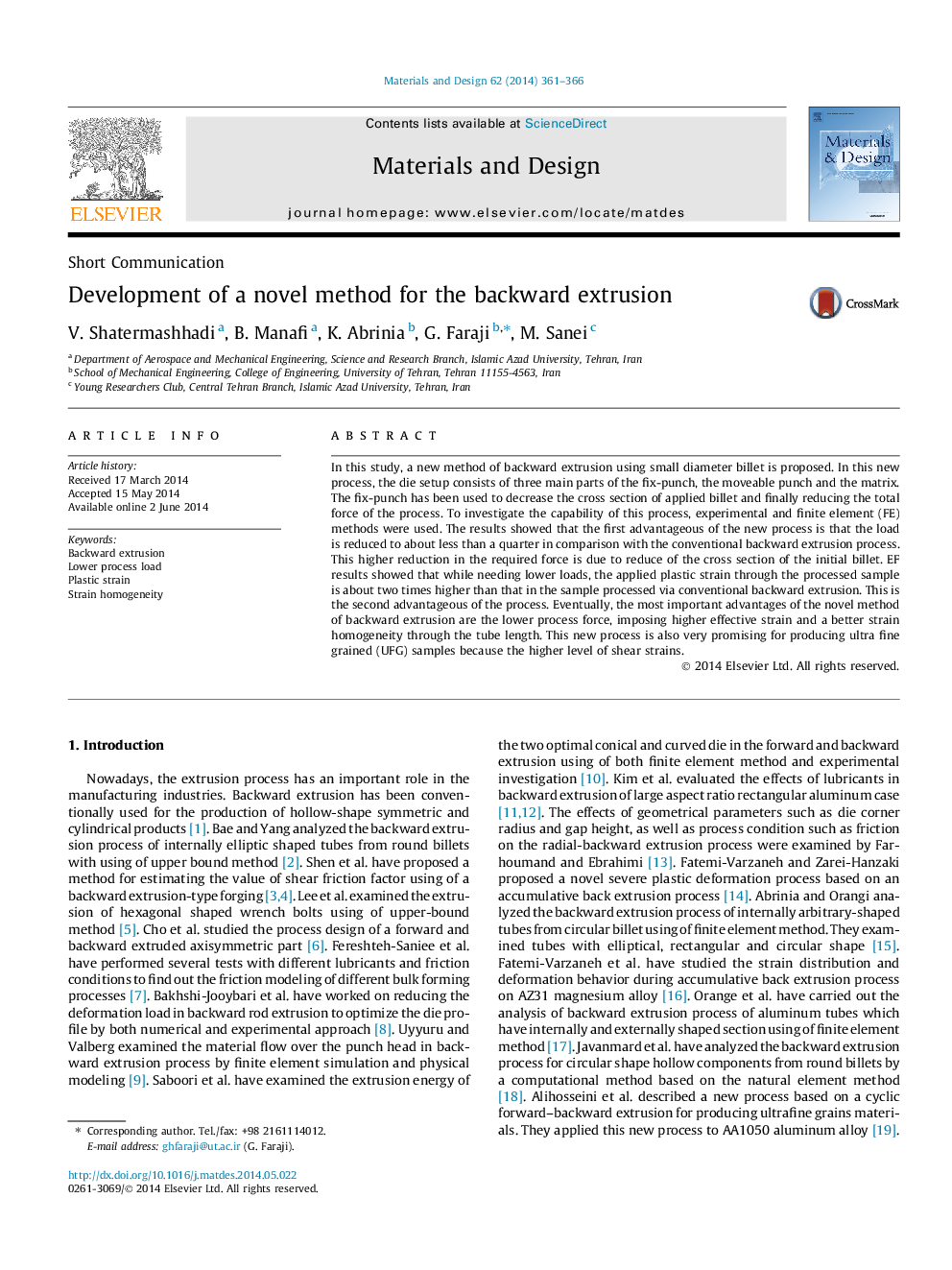| Article ID | Journal | Published Year | Pages | File Type |
|---|---|---|---|---|
| 829113 | Materials & Design (1980-2015) | 2014 | 6 Pages |
•A new method of backward extrusion using small diameter billet was proposed.•The load was reduced to about less than a quarter.•The applied plastic strain was doubled.•Better strain homogeneity through the tube length was achieved.
In this study, a new method of backward extrusion using small diameter billet is proposed. In this new process, the die setup consists of three main parts of the fix-punch, the moveable punch and the matrix. The fix-punch has been used to decrease the cross section of applied billet and finally reducing the total force of the process. To investigate the capability of this process, experimental and finite element (FE) methods were used. The results showed that the first advantageous of the new process is that the load is reduced to about less than a quarter in comparison with the conventional backward extrusion process. This higher reduction in the required force is due to reduce of the cross section of the initial billet. EF results showed that while needing lower loads, the applied plastic strain through the processed sample is about two times higher than that in the sample processed via conventional backward extrusion. This is the second advantageous of the process. Eventually, the most important advantages of the novel method of backward extrusion are the lower process force, imposing higher effective strain and a better strain homogeneity through the tube length. This new process is also very promising for producing ultra fine grained (UFG) samples because the higher level of shear strains.
Graphical abstractFigure optionsDownload full-size imageDownload as PowerPoint slide
